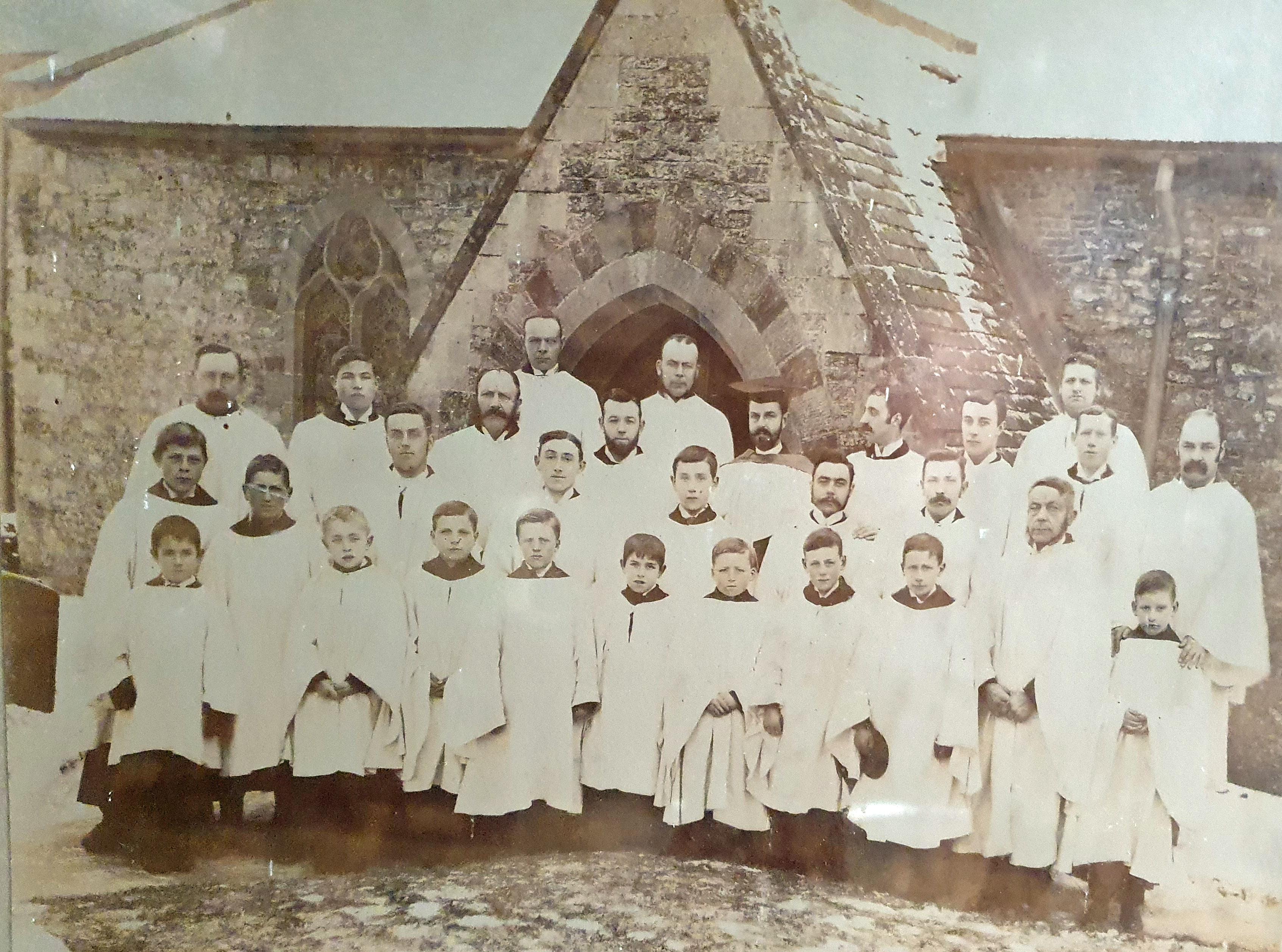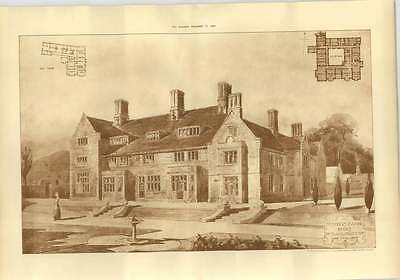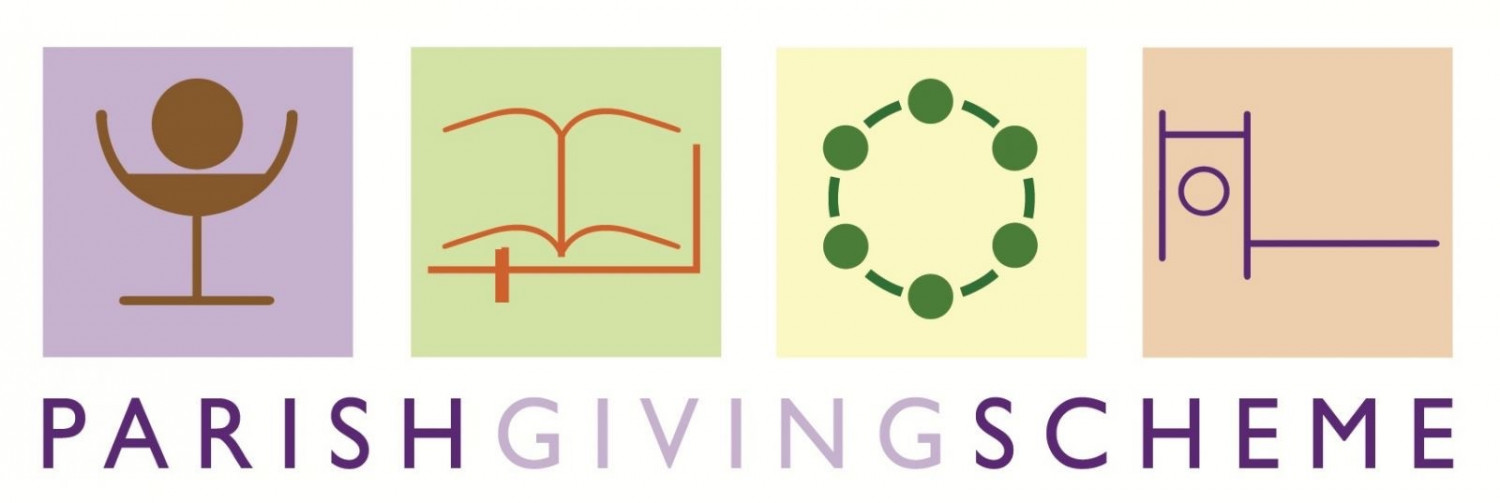What differences would you see in church services in Westbury if you could travel back in time?

The Very Early Days
Fifteenth Century
Eighteenth Century
Nineteenth Century
Today
There is no evidence of a church in Westbury in Saxon times, but often today's buildings were constructed where there had been places of worship before. If there had been a church, it would have been a simple, one room building and the service would have been spoken in Latin, and ceremonial and vestments would have been part of the rituals. There would have been a stone altar in the same sort of position it is now.
The original building by Ralph de Hareng would have been very small, compared to what you see today. The windows would have had no glass, just shutters. The walls were probably covered with pictures of saints, Bible stories and legends. There were no seats, just a bench along one wall. (Hence the saying, 'The weakest go to the wall')!
The service would be said in Latin, with a few people joining in with the Creed. People would stand or kneel on the bare earth floor, some saying their own prayers, some listening to the priest.
A choir would have been trained to contribute to the liturgy on the people's behalf. Light would be by candles, and so the atmosphere, with candles and incense, would be rather smoky.
By the fifteenth century, when Alicia Terry left money for Westbury's new bells, the church would have been expanded and much more airy, with light coming through the clerestory windows.
There would still only be seats for the clergy, the family from the Manor, and the parish clerk. The service would still be in Latin, and some people might be using rosaries to say their own prayers, while the wealthy people may have had little primers, or prayer books of their own.
The stone altar being against the east wall, the clergy would say the service with their back to the people.
The people just listen to the service, they do not receive Communion (they do so only rarely, and then only bread and not wine).
If you were to visit St Augustine's in 1561 for the morning service, you would find things rather different to what has been described above. William Baddisley, the Vicar, could point out the many changes to you.
The wall paintings would have disappeared, the stone altar would have gone, to be replaced by a wooden one.
There is now a prayer book, in English — after changes in 1549 when the first one in English was used, then 1552 when a simpler one was instituted, then back to Latin under Queen Mary, then back to English, nearly the same as 1552, under Queen Elizabeth. William must have seen more changes in his time at Westbury than any other clergyman.
People are now joining in more of the service — still no hymns, but they might have sung a metrical psalm. The colourful robes are gone, and Revd Baddisley wears a white surplice and black scarf.
Communion takes place immediately after the morning service, and only those people who have given their names to the Vicar beforehand come and gather round the communion table to receive Communion both bread and wine.
There is another service later that day, too, plus teaching for the children in the afternoon.
By the 18th century, you would be able to sit in comfort, as the church is filled with plenty of pews. However, you would have to be careful where you sat, because pews are only available to those who have paid rents for them, who would have their private pew, the best being reserved for the lord of the manor and his family.
The responses in the service would be made by the parish clerk, and some would be sung by the choir, possibly accompanied by some instruments (which would be at the back of the church). Apart from joining in metrical versions of the psalms, there is little for the people to do, other than listen to the very long sermon.
After the nineteenth century restoration of the church building, you would find that pews are now free.
There might be an extra service in the evening for the servants, and an 'early service' at 8am, as well as one midmorning.
Colour is back, in the beautiful colours of the stained glass windows, and the text over the chancel arch. The chancel is now raised two steps above the nave floor, and is newly tiled.
The sanctuary is also raised and newly decorated. The bare wooden altar table of last century is now covered with hangings, and the priest is wearing colourful vestments. A robed choir processes to the two rows of stalls in the chancel, and the music comes from a new organ. You can follow the words in the new hymn book, Hymns Ancient & Modern
Although the words of the service are the same as they were 100 years ago, there is now much more ceremonial and ritual accompanying them.
Today there are yet more changes, showing that this church is a living community of the church, not just a museum to past ages.
The church building and furnishings have not changed very much, although we sometimes move the pews for flexibility. If you come to some of our evening services you will find us still using the words of the prayer book used for the last 400 years — but on other Sundays we use modern language.
The priest still lives in Westbury, in a new vicarage — but she is responsible for 5 other parishes as well, which means that churchgoers today have more opportunity to use their skills and talents in serving God in his church.
So some services may be led, and some sermons may be preached, by lay people who have taken courses of study and who are authorised by the Bishop to do so.
We still use the organ given in 1862, but because there are not many people who are able to play it, we also use more modern technology and instruments.
We still have Communion services on Sunday mornings as part of the calendar with the other churchs in the benefice, and the liturgy is celebrated in words we can all understand, as it was in 1549 when the people had the first opportunity to use their own language rather than Latin.
Several people take part in leading the worship and all who are baptised are welcome to receive the bread and the wine.
Our services are constantly evolving, to meet the needs of the congregation in Westbury as it grows and changes, and as we worship
We hold special services such as at Christmas, Easter, Remembrance & Harvest. Wehave even held a pet service!
Please come along and join us - you will be assured of a warm welcome

Westbury Manor 1904
It costs over £20,000 each year to keep the church open and maintain the churchyard. If you are able to help at all, please click here or on the Parish Giving icon below. Thank you
